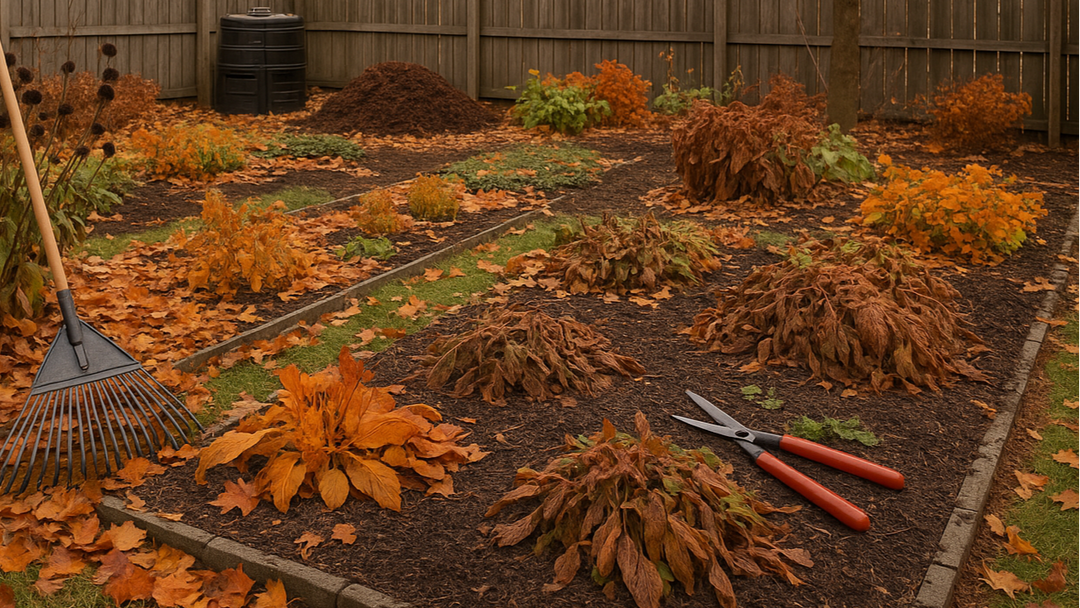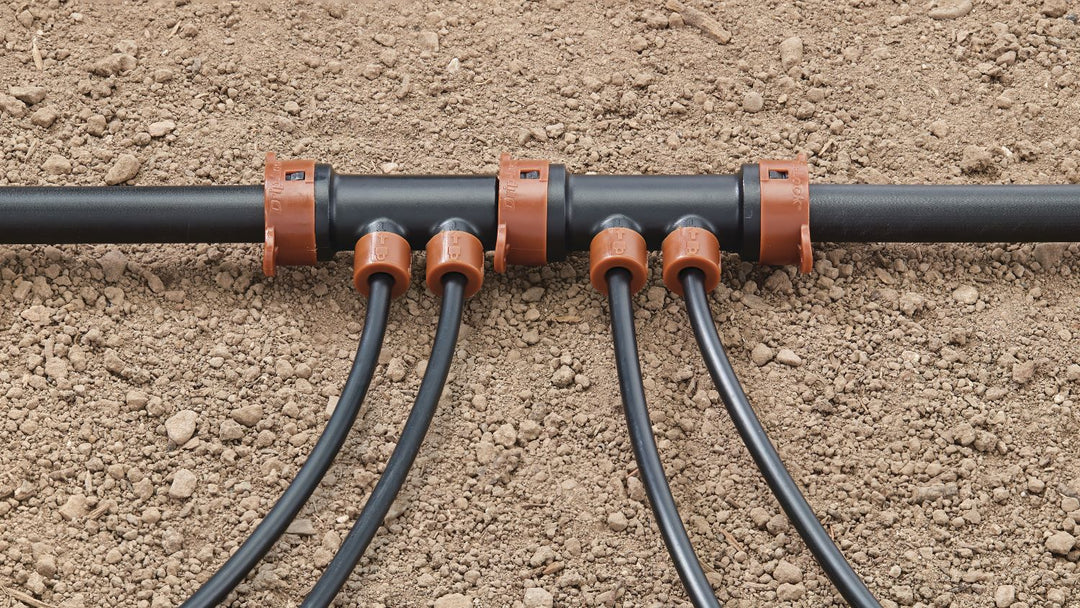Connect Your Sprinkler System to WiFi

The Complete Guide to Smart Sprinkler Systems: Converting, Connecting, and Troubleshooting Your Way to a Smarter Lawn
Picture this: You're at your kid's soccer tournament on a blazing Saturday when you realize your sprinklers are set to run before the after-game party. Or maybe you're helping your parents figure out why their water bill spiked last month, only to discover they've been overwatering.
Sound familiar? You're not alone. Converting your traditional sprinkler system to a smart, Wi-Fi-connected system isn't just about having the latest tech—it's about taking control of your watering schedule from anywhere, saving money, and giving yourself (and your family) peace of mind.
Why Convert to a Smart Sprinkler System?
Before we dive into the how-to, let's talk about why this upgrade makes sense:
Weather Intelligence: Your system automatically adjusts for rain, wind, and temperature—no more watering during storms or forgetting to turn off zones when the weather changes.
Remote Control: Turn zones on or off from anywhere with cell service. Perfect for busy families, frequent travelers, or helping aging parents maintain their yard.
Water Savings: Smart scheduling can cut your water usage by 30% or more, which means real money back in your pocket every month.
Rebate Opportunities: Many water utilities offer rebates for smart controller installations. Check our rebate center to see what's available in your area—some rebates can cover the entire cost of your upgrade.
How to Convert Your Existing Sprinkler System to Smart
Good news: Most existing sprinkler systems can be upgraded to smart without major rewiring. Here's what you need to know:
Assess Your Current System
Check your existing controller: If your current controller is less than 10 years old and working properly, you might be able to add a smart module. However, most homeowners find it easier and more reliable to replace the entire controller unit.
Count your zones: Take note of how many watering zones your current system has. Smart controllers like the B-hyve series can handle anywhere from 4 to 16 zones, covering most residential needs.
Verify your wiring: Before upgrading, test each zone to ensure all wiring is functioning properly. Run each zone manually from your current controller and check that sprinklers activate correctly. If any zones don't work, address wiring issues before installing your new smart controller.
Choosing Your Smart Controller
For most homes, look for these features:
- Wi-Fi connectivity with reliable app control
- Weather-based scheduling that adjusts automatically
- Easy programming with smartphone app
- Local weather station integration
- EPA WaterSense certification for rebate eligibility
B-hyve smart controllers stand out because they include WeatherSense technology that automatically checks local conditions multiple times daily and adjusts watering schedules accordingly. This means less guesswork for you and more water savings. Plus, they have Bluetooth so you can control them even when the Wi-Fi is down.
Installation Process
Safety first: Turn off power to your existing controller by either unplugging it or turning off the breaker before starting any work.
Remove the old controller: Take photos of your wire connections before disconnecting anything! Label each wire with its zone number using masking tape.
Install the new smart controller: Most smart controllers mount in the same location as your old one. Connect the wires according to the manufacturer's instructions—typically, zone wires connect to numbered terminals, and the common White wire connects to the "C" or common terminal.
Test each zone: Before finalizing the installation, manually test each zone through the controller to ensure proper operation.
Automating Your Watering with a Wi-Fi Hose Controller
Don't have an in-ground system? No problem. Wi-Fi hose controllers let you automate any hose-connected watering setup, from sprinklers to drip systems. Most of them are also Bluetooth based for easier connection!
What You'll Need
A reliable outdoor Wi-Fi signal: Walk to your hose faucet with your phone and check signal strength. If it's weak, consider a Wi-Fi extender.
Compatible hose setup: Most standard garden hoses work perfectly. You'll attach the smart timer between your faucet and your existing sprinkler or watering equipment.
Setup Process
Install the timer: Thread the smart hose timer onto your outdoor faucet, then connect your hose or sprinkler system to the timer's output.
Set up the hub: Most EPA WaterSense certified hose timers require a smart hub connected to your home internet. Place the hub indoors near your router and connect it according to the manufacturer's instructions.
Download the app: Most smart hose timers have their own smartphone app for setup and control.
Connect the system: Follow the app's prompts to connect both the hub and timer. The hub communicates with your home network while connecting wirelessly to the outdoor timer.
Program your schedule: Set up watering times, duration, and frequency based on your lawn and garden needs.
B-hyve hose faucet timers excel here because they integrate the same WeatherSense technology found in their in-ground controllers, automatically adjusting your hose-connected watering based on local weather conditions.
Connecting Your Sprinkler System to Wi-Fi
Whether you're setting up a new smart controller or hose timer, the Wi-Fi connection process is similar:
Check Your Network Requirements
Signal strength: Your Wi-Fi signal should reach your controller location with at least 2-3 bars of strength.
Network frequency: Most smart irrigation controllers work best on 2.4GHz networks rather than 5GHz. Check your router settings or look for a network name ending in "2.4G".
Internet stability: A reliable internet connection ensures your system can access weather data and receive your remote commands.
Step-by-Step Connection
Put your controller in pairing mode: This typically involves holding down specific buttons until you see a blinking light. Consult your controller's manual for the exact process.
Open the manufacturer's app: Download and open the app before starting the pairing process.
Follow the app prompts: The app will guide you through connecting to your home network. Have your Wi-Fi password handy.
Test the connection: Once connected, test remote control by manually starting and stopping a zone through the app.
Common Connection Issues
Weak signal problems: If your connection drops frequently, consider moving your router closer or adding a Wi-Fi mesh extender.
Can't find the controller: Make sure you're on the same network as the controller and that the controller is in pairing mode.
Connection successful but loses signal: Some controllers work better with dedicated 2.4GHz networks or guest networks with simpler passwords.
How to Reset Your Smart Sprinkler Controller
Sometimes your smart controller needs a fresh start. Here's how to reset the most common brands:
B-hyve Controllers
Factory reset: Hold the reset button for 10+ seconds until all lights flash. This erases all programming and returns the controller to original settings.
Rain Bird Controllers
Most Rain Bird smart controllers: Press and hold the "Reset" button (usually a small recessed button) for 10 seconds while the controller is powered on.
Hunter Controllers
For Hunter smart controllers: Turn the dial to "Reset" position, then press and hold the PRG button until the display flashes.
Rachio Controllers
Gen 2 and Gen 3 Rachio: Press and hold the small reset button on the back of the controller for 10 seconds.
When to Reset
Wi-Fi connection problems: If your controller won't connect or stays offline, a reset often resolves the issue.
Erratic behavior: If zones turn on randomly or programming seems corrupted, a factory reset followed by reprogramming usually fixes the problem.
After power outages: Some controllers benefit from a reset after extended power outages.
Before selling or moving: factory reset before transferring ownership to protect your personal information. Some manufacturers can also transfer the programming between users.
Finding Rebates for Your Smart Sprinkler System
Converting to a smart sprinkler system often qualifies for utility rebates that can significantly offset your costs.
Where to Find Rebates
Water utility companies: Most utilities in arid regions offer rebates for EPA WaterSense certified smart controllers. Rebates typically range from $50 to $200.
Municipal programs: Many cities offer additional rebates on top of utility programs, especially in drought-prone areas.
State programs: Some states provide rebates for water-saving devices, particularly in the western United States.
Our rebate center: Visit orbitonline.com/pages/rebate-center to search for available rebates in your area by entering your zip code.
Maximizing Your Rebate
Choose EPA WaterSense certified products: Most rebate programs require this certification. B-hyve controllers meet these requirements and often qualify for maximum rebate amounts.
Save your receipts: Most programs require proof of purchase and installation.
Apply promptly: Many rebate programs have limited funding and operate on a first-come, first-served basis.
Consider professional installation: Some rebates require professional installation or preapproval before purchasing your system.
Getting the Most from Your Smart System
Once your system is installed and connected, take advantage of these features:
Weather-based scheduling: Let your system automatically adjust for local conditions rather than running on a fixed schedule.
Zone customization: Set different schedules for lawn areas versus garden beds, accounting for different water needs.
Usage monitoring: Track your water consumption to spot leaks early and optimize your watering schedule.
Seasonal adjustments: Most smart controllers automatically reduce watering in fall and winter, then ramp up for spring growth.
Remote monitoring: Check system status while traveling and make adjustments as needed.
The Bottom Line
Converting to a smart sprinkler system isn't just about convenience—it's about being a smarter homeowner. Whether you're upgrading an existing in-ground system or automating a hose-connected setup, smart irrigation technology pays for itself through water savings while giving you complete control over your watering schedule.
Start simple: If you're unsure about a full system upgrade, try a smart hose timer first to experience the benefits of automated, weather-smart watering.
Think long-term: The water savings and convenience of a smart system continue year after year, while rebates can eliminate much of the upfront cost.
Don't wait for problems: Converting before your old controller fails means you can take time to research options and take advantage of rebate programs.
Your yard (and your water bill) will thank you for making the switch to smart irrigation. The best part? Once it's set up with weather-smart technology like B-hyve's WeatherSense, your sprinklers become one less thing to worry about, freeing you up for the stuff that really matters—like not missing that game-winning goal because you're rushing home to turn off the sprinklers.
Ready to make the switch? Check for available rebates in your area and start planning your upgrade to smarter watering today.






